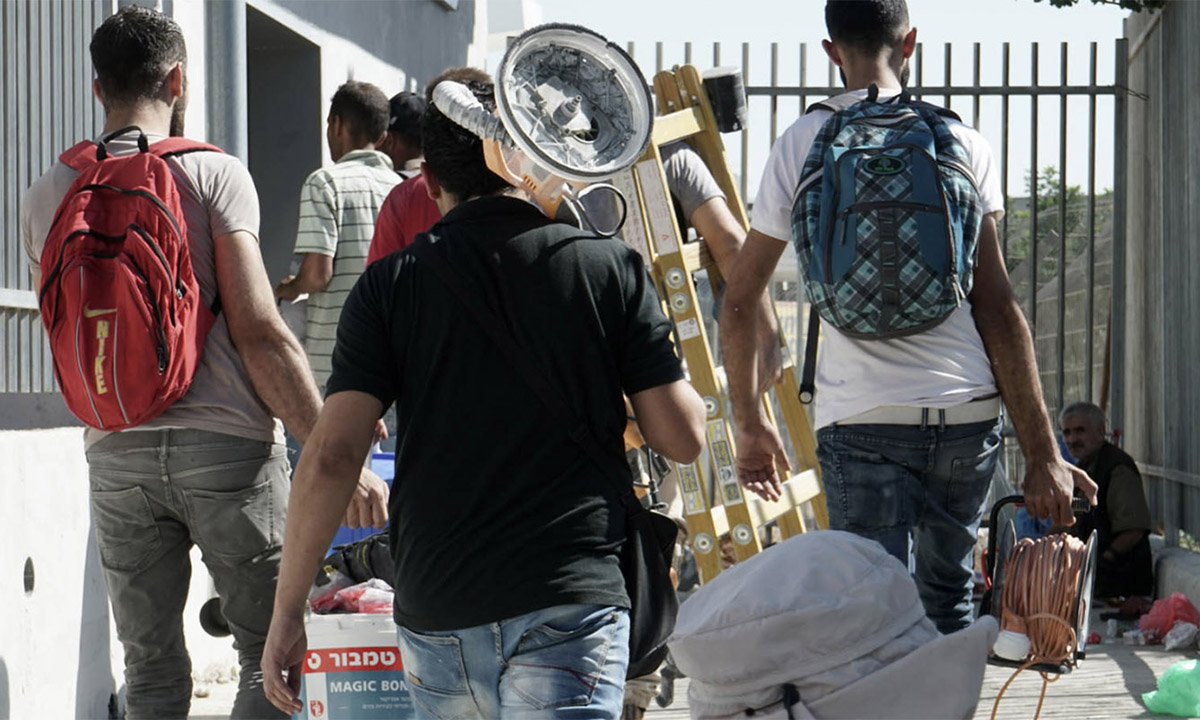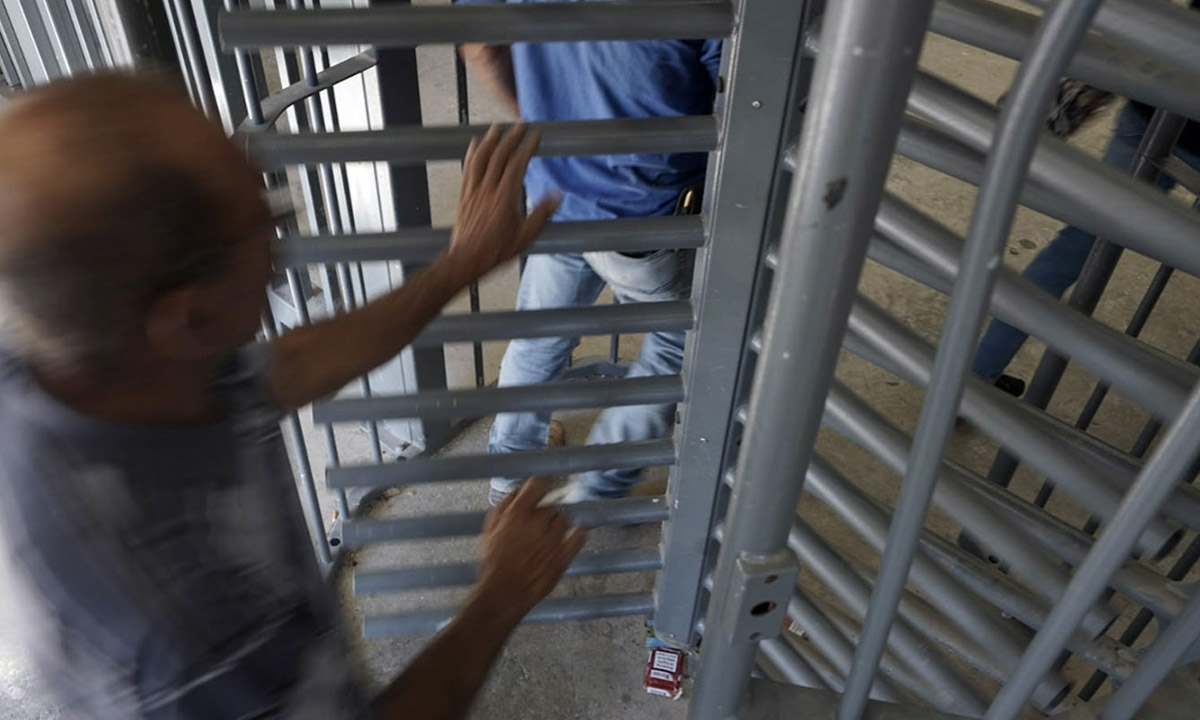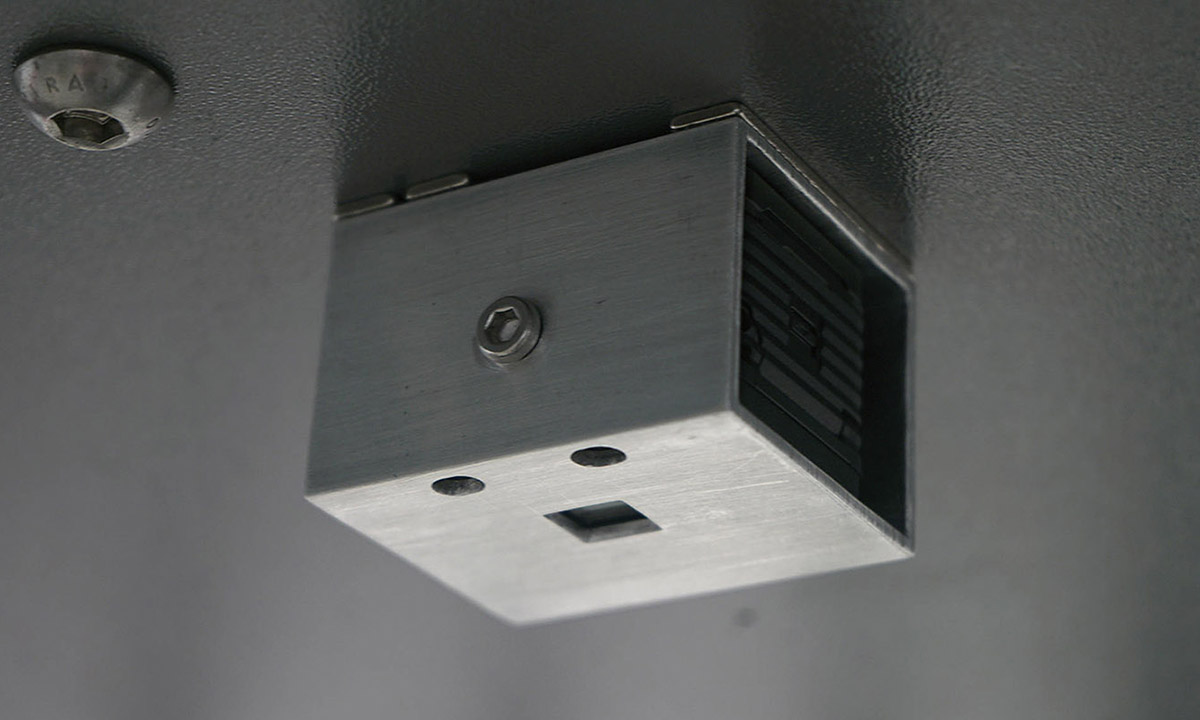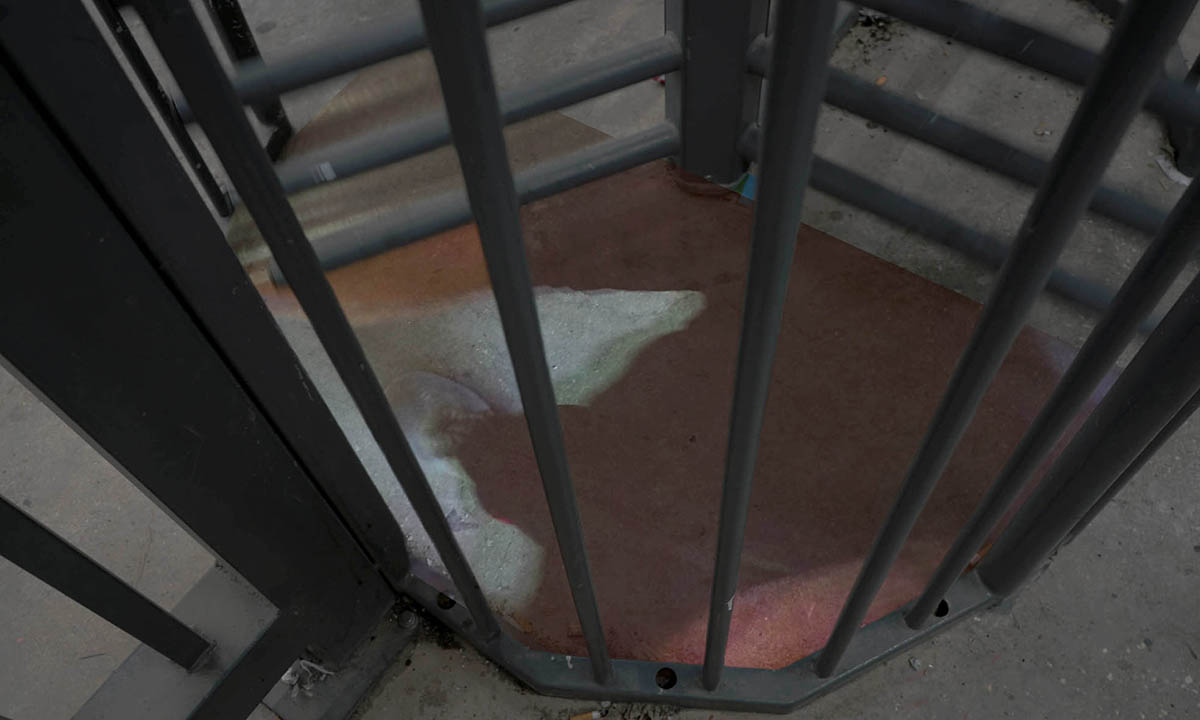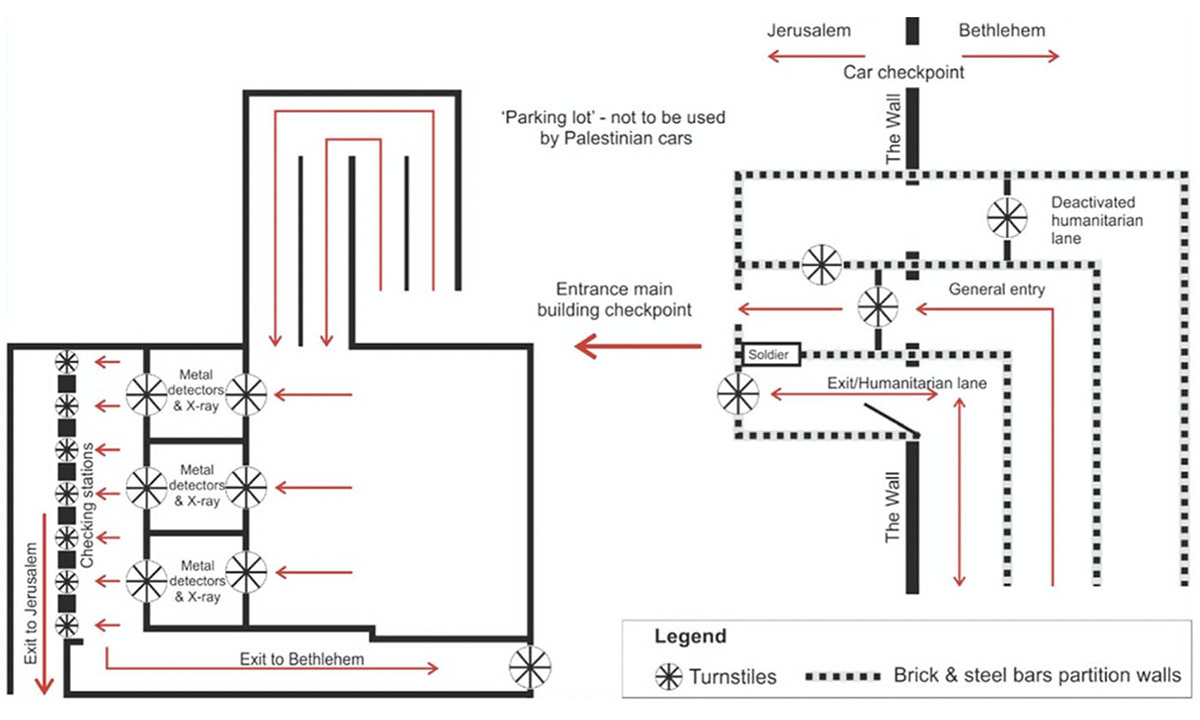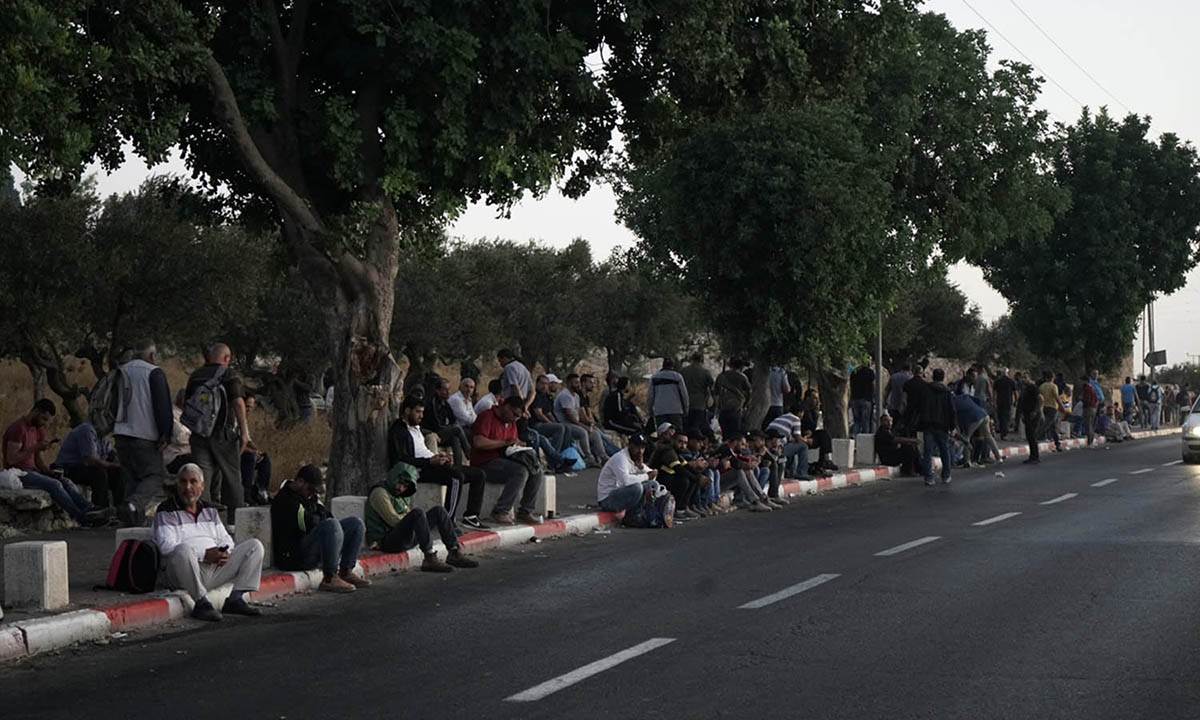Checkpoint 300 is a site-specific film made within the main turnstile at Terminal Checkpoint 300 in Bethlehem. This crossing point, in its current configuration, was established in 2005 as part of Israel’s separation wall. Each day, thousands of Palestinians from the southern occupied West Bank must pass through this barrier to reach their workplaces in occupied East Jerusalem. The turnstiles at Checkpoint 300 play a crucial role in managing the flow of people. They are constructed with steel arms that are only 55 cm long — approximately 20–25 cm shorter than the standard turnstile arms commonly used elsewhere in Israel. According to architect and theorist Eyal Weizman (2007), the Israeli Ministry of Defence specifically requested the reduced arm length so that the turnstiles would press tightly against the bodies of Palestinian commuters, making it more difficult to conceal objects under clothing. For those forced to navigate this space, the physical design results in deeply personal disruptions — parents are separated from their children, and workers from the tools or equipment they rely on for their jobs.
More Info
This fieldwork focused on documenting daily life at one of the busiest checkpoints in the West Bank. Each morning, between 4,000 to 6,000 Palestinian workers cross Checkpoint 300 between 4 am and 7 am, enduring long waits that can stretch up to three hours during peak times. A compact camera rig was specifically designed and discreetly installed within a turnstile on the Bethlehem side. It automatically records as each person pushes through, capturing the repetitive, constrained movements of bodies in transit. Through this embedded perspective, the turnstile is reframed not just as a mechanism of passage, but as a spatial-political technology — one that controls, fragments, and regulates the daily movement of Palestinians under occupation.
